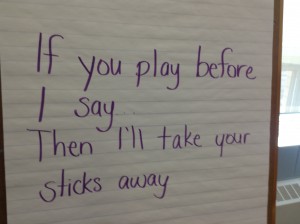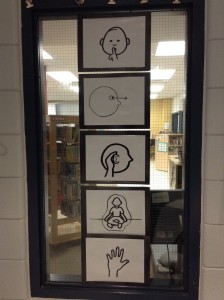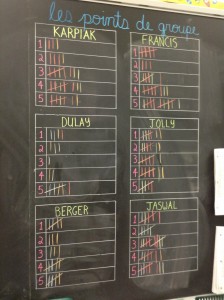Last year, my school had our very first evening concert. It went so well in December that we did it again in May. It was the first time I had ever organized a large evening event and I learned a lot. As I am getting ready to do another concert this spring, I have been reviewing my notes from the previous year to prepare. Below are some of the questions that came up and how we decided to deal with them. Hopefully, this can be a starting point for preparing a concert at your school!
What kind of budget can we have?
My principal suggested that we should stay around a couple hundred dollars. We did one shop early in the process for things like cotton balls or glitter. Closer to the show, we did one more big shop. It was easier for our secretaries to do big shops and hand in one or two receipts instead of multiple small purchases. We did not ask parents for money.
How will we communicate information to parents?
A letter went home introducing the concert and a follow-up letter went home with tickets. A Synervoice call (robocall) was made to homes the day before the ticket information went home. Another Synervoice call was made two days before the concert.
How will we control the crowds and ensure the safety of the students performing?
Benches were placed across the front of the gym to prevent parents from coming too close to the classes performing. The principal made it part of her opening remarks to remind parents to stay behind the benches.
Can we sell food?
We asked permission from our custodial staff before we went ahead with food sales. Once the custodial staff gave us the okay, we bought popcorn, cookies and water from Costco. I also told the custodial staff that all volunteers would assist with the cleanup after the concert. Obviously, the teachers’ first responsibility was to ensure that the students were safely picked up by their parents, but after the students were all gone, everyone helped with the cleanup.
How can we deal with people who show up without tickets?
The directive from my principal was to just let it go. We had a couple of people show up without tickets so plan for a few extra spaces in the gym. We didn’t want the evening to be about anything except celebrating the students so we didn’t make a big deal about it.
Can we give high school students volunteer hours for helping us?
Yes!
What time is the dress rehearsal?
We ended up having two different dress rehearsals. (I would do more with a kindergarten performance). I tried my best to move classes around so that no one lost their planning time and I invited the classes that were supposed to have phys ed during this time so that the gym teachers didn’t get displaced.
Will there be dinner for volunteers?
Yes, pizza and salad were provided.
Will we have access to walkie talkies?
We used the walkie talkies on the night of the performance to communicate with each other.
How do we photocopy communication about the concert?
Anything photocopying for the show was done using the office code.
Should we prepare a video recording for sale?
We opted not to have anyone videotape the concert to sell to parents. Most people carry video recorders in their phone and had the ability to record the performance.
How will we do the drop off and pick up of students?
The kids were dropped off and went directly to their classroom. The parents picked up their children from their classroom at the end of the concert.
Can we have an extracurricular club to help with the preparation of the concert?
Yes, the club was a fun group of older kids who helped with everything from decorating and costumes, to holding the doors and helping to collect the tickets. They were amazing.
How long will the concert be?
After putting two classes together to perform, there were 10 performances in total. The concert lasted about one hour.








